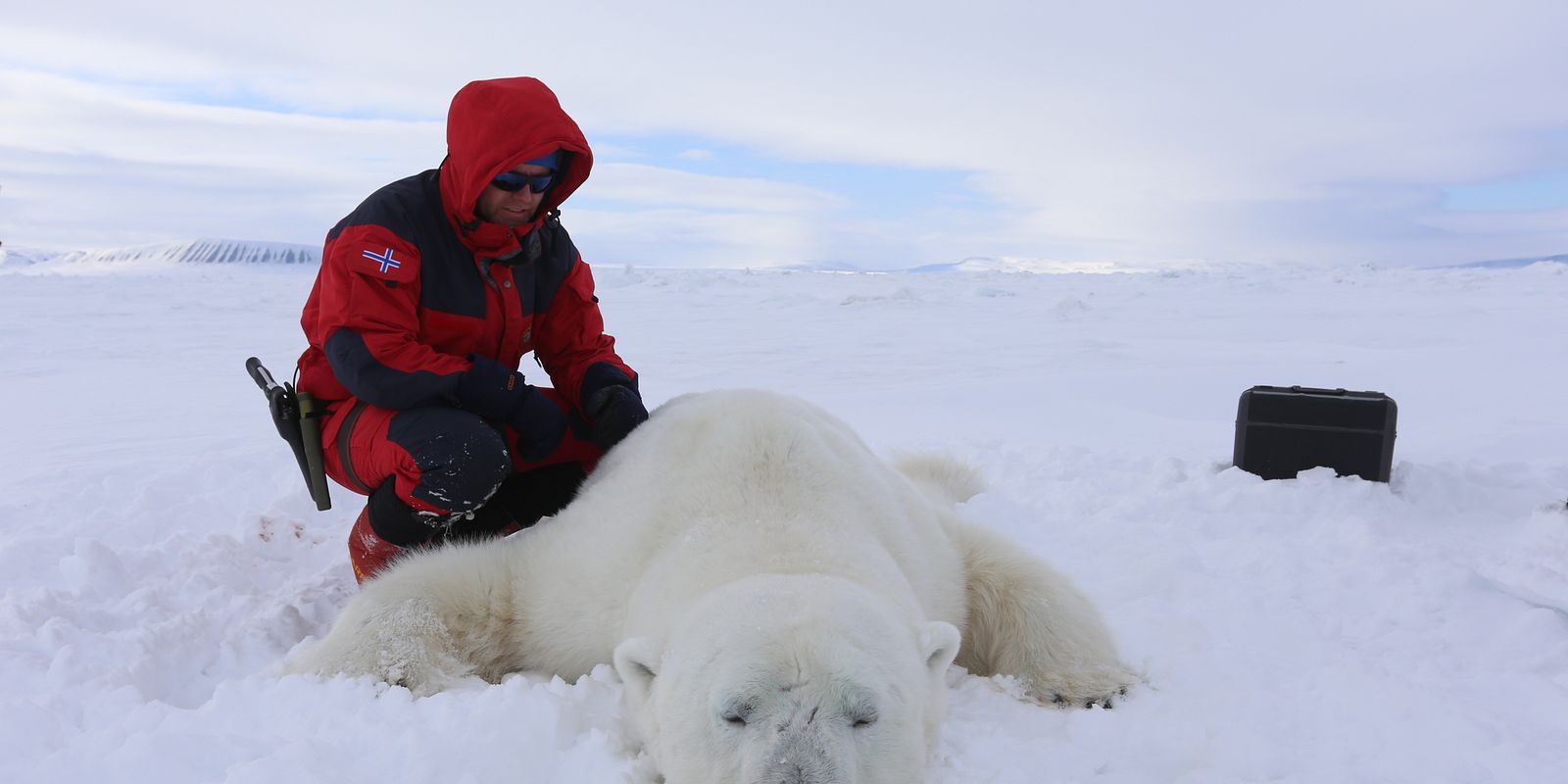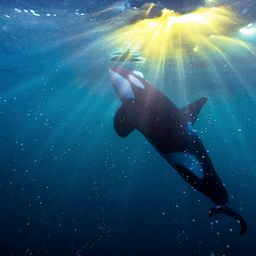25 March 2025 news
Text by Audrey Youjia Su
Large marine mammals are some of the most polluted animals on the planet. This is a result of a process known as biomagnification, where chemical pollutants get ingested by small marine organisms and build up in the fatty tissues of larger animals as they move up the food chain. Animals at the top of the chain, such as killer whales, can end up carrying over 100x the harmful level of pollutants, enough to classify them as toxic waste. Chemical pollutants can have deadly effects on the health and survival of these animals, making them a major threat to these species. Two research project SLICE and Marma-detox collaborates to study the combined effects of pollutants and stress from activities like whale tourism on marine mammals.
The project manager of the Marma-detox project, Anders Goksøyr, explains:
- we know that these chemicals can impair the animal’s ability to reproduce or fight off disease. However, we know much less about the specific, internal mechanisms that cause this to happen.
How to study these effects in a human and effective way?
Studying the effects of pollution on marine mammals is a challenge. These animals are widely distributed across the world’s oceans, so finding them can be difficult. In addition, scientists need samples from organs like the liver, kidneys, and gonads. These are places where pollutants tend to build up, but getting organ samples from wild animals is nearly impossible. How do you study the effects of pollution on large marine mammals in a way that’s both humane and effective?
- The Marma-Detox project is an international research project that aims to address all of these challenges using cell cultures. Our goal is to understand the effects of ocean pollutants on large marine mammals in a way that is efficient for the researcher and ethical for the animal. To do this, we partner with another research project called SLICE, who takes small skin and blubber biopsies from whales in the wild. We then use skin pieces from those biopsies to create cell cultures. We can use these cells to study pollution in marine mammals in ways we never could before says Goksøyr.
The leader of the SLICE project, Pierre Blévin continues:
- Marma-detox and SLICE are sister projects in that both projects are trying to understand the specific effects of chemical pollution on large marine mammals. In the SLICE project, we want to focus on the tissue level by keeping live blubber slices to further expose them to pollutants and stress hormones. To obtain our samples, we use darts to take small biopsies from wild whales, just below their dorsal fin. We were able to take biopsies from fin whale, humpback whale and killer whale.After we have collected the biopsies, we store them in a sterile container and ship them to the lab to perform the experiments.
The choosen method
Postdoctoral research fellow at the University of Bergen, Sofie Søderstrøm, explains the method used:
- Our combined labs are currently conducting three different types of experiments. The first is the establishment of whale cell cultures, which is done by Marma-Detox. We grow the cell cultures and then expose them to different levels and mixtures of pollutants to study how they affect the cell’s DNA and cellular processes.
The SLICE project conducts experiments to test how the pollutants affect large marine mammals at the tissue level. This is done by looking at how pollution affects groups of different cells, rather than just one cell type. Once the samples arrive at the lab, they immediately cut very thin slices of blubber. In the SLICE project, the slices are exposed to a mixture of pollutants and cortisol, which is a type of stress hormone. This is done to study how the cells respond to a combination of pollution and stress. The usage of the biopsy is optimized and the cuts that the SLICE project uses are taken from the same biopsies that the Marma-detox project uses to establish cell cultures.
Søderstrøm continues:
- The nice thing about our research methods is that we can get our samples without bothering the whales that much. The downside of this method is that the range of cell types we can obtain is limited to cells found in skin and blubber tissue. These cells don’t express all of the genes we want to study. Ideally, we’d like to study how pollutants are affecting organs like the liver, brain, and fat tissue. Normally, you could only obtain those organs from a dead whale, so we are trying to re-program the cells we have into other cell types, such as liver cells and fat cells. We might even be able to reprogram them into brain cells with the help of some collaborators in Italy. If we’re successful with this process, the research possibilities will be endless.
Anders Goksøyr explains further:
- The biggest advantage about working with cell cultures is that these cells can be maintained and multiplied to large numbers in the right conditions. The methods we use make our research much more convenient and affordable than if we were to study these animals in the wild. This kind of research has not been done before, so we’re very excited to be paving the way for toxicology research on marine mammals.
Potential impact from the research
The Marma-detox and SLICE projects could potentially play a key role in helping to create cleaner oceans. The findings from their research will help us “understand and beat marine pollution”, a major challenge that the UN is looking to address by 2030 through their Decade of Ocean Science for Sustainable Development. By providing important knowledge about how pollution affects marine mammals, Marma-detox and SLICE can help create solutions and policies that would reduce or ban chemical pollutants from entering the ocean. Through their innovative research, the Marma-detox and SLICE Projects work to create healthier marine mammal populations and a cleaner ocean in the hopes of building a more sustainable future for our planet.
Both projects are financed by the Research Council of Norway:
Marma-detox: https://prosjektbanken.forskni...
SLICE: https://prosjektbanken.forskni...
Video explaining the two projects: https://www.mynewsdesk.com/no/...
The SLICE project: https://akvaplan.no/no/prosjek...


